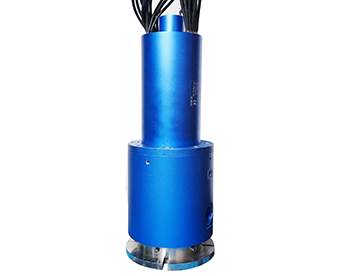Cable Slip Ring
Cable Slip Ring
Blog Article
Cable Slip Ring is an electrical rotating connection device that realizes the continuous transmission of electric energy, signals, fluids or data between fixed structures and rotating structures. It is different from the traditional metal ring + brush structure. Cable Slip Ring completes the connection task by winding and unwinding the flexible cable and cooperating with the rotating bearing structure. In some special occasions, it is called "wrap-type slip ring" or "twisted cable slip ring".
Cable Slip Ring is widely used in scenarios that are not suitable for traditional slip ring structures, especially in equipment that requires high reliability, contactless transmission or long cable travel.

Material:
Conductor (cable core): commonly used multi-strand tinned copper wire, silver-plated copper wire, or highly flexible copper alloy wire, with good conductivity and bending resistance.
Cable outer sheath: mostly made of high-elastic TPU, PVC or silicone materials, with good wear resistance, tear resistance, oil resistance, cold resistance and other properties.
Insulation layer: Each conductor core inside has an independent insulation layer, and common materials are PE, PP, XLPE to ensure that there is no crosstalk between signals/currents.
Rotating structure: ball bearing or bearingless structure is adopted to keep the cable smoothly retracted and released during the rotation of the slip ring assembly.
Shell material: aluminum alloy, stainless steel, industrial plastic, etc. can be selected according to the application environment, with dustproof, waterproof, corrosion-resistant and other capabilities.
Application:
Camera system: such as rotating pan/tilt, 360° surveillance camera, transmitting power and video signals.
Radar/antenna equipment: used for continuously rotating radar antenna devices, supporting data and power channels.
Wind power generation system: used for rotating electrical connection of yaw system control cable.
Industrial automation: such as assembly robot arm, rotating transmission equipment, robot platform.
Medical equipment: CT, X-ray and other equipment that need 360-degree continuous rotation and simultaneous transmission of power and image signals.
Stage lighting device: used for power and DMX control signal connection of rotatable lamps on stage.
Features:
Flexible twist cable structure: the cable is wound and relaxed internally to match the movement of the rotating shaft, without the need for traditional brush ring contact structure.
Contactless conduction: conduction is achieved through the entire cable, reducing the sparks and wear caused by the friction of traditional Slip Rings.
More suitable for weak signal transmission: due to the lack of brush contact interference, it is suitable for analog signals, digital signals, and high-frequency communications.
Low-noise operation: compact structure, quiet rotation, no need for frequent maintenance or lubrication.
Supports a variety of combined channels: power lines, control lines, communication lines, optical fibers and even gas/liquid pipelines can be combined and integrated into a slip ring system.
Advantages:
Simple structure: the traditional metal brushes and conductive rings are eliminated, reducing mechanical complexity.
Good contact stability: the cable transmits signals as a whole and has strong anti-interference ability.
High reliability: the brushless structure reduces wear and tear, has a long service life, and is suitable for long-term continuous operation.
Supports customized multi-channels: the multi-core composite cable structure can be designed according to user needs, and flexibly adapts to different voltage and current levels.
Adapts to a variety of installation methods: supports hollow shaft, flange, cap and other installation forms, and can be quickly integrated into user equipment.
FAQ:
What is the difference between Cable Slip Ring and traditional metal slip ring?
Cable Slip Ring uses flexible cable for overall rotation transmission, and does not rely on brushes to contact metal rings for conductivity. Therefore, it is brushless, wear-free, and spark-free, and is suitable for applications with high signal stability requirements. Traditional Slip Rings rely on contact methods, have high friction, and require frequent maintenance.
Can Cable Slip Ring transmit Ethernet or high-speed signals?
Yes. High-quality Cable Slip Ring is designed with twisted pair shielded wire structure or coaxial cable, which has good impedance matching and supports stable transmission of high-speed or industrial communication protocols such as Ethernet, CAN, HD-SDI, and RS485.
Is there a limit to the rotation speed of Cable Slip Ring?
Yes. Because the internal cable structure is limited by the winding tension, the recommended rotation speed of Cable Slip Ring is usually no more than 300 RPM. If a higher speed is required, a high-speed dedicated structure or a traditional brush ring slip ring should be used.
Is Cable Slip Ring waterproof and dustproof?
Yes. Depending on the application environment, Cable Slip Ring can be equipped with IP54, IP65, and IP68 grade protective shells, which are suitable for outdoor, high humidity, dust and other complex working conditions. The waterproof structure mostly uses sealing rings and glue sealing technology.
Can the length and number of cores of Cable Slip Ring be customized?
Yes. The length, number of cores, cable cross-section, voltage level, outer sheath material, and shielding method of the cable can be customized according to the specific needs of the customer to meet different mechanical structure and electrical connection requirements.
Report this page